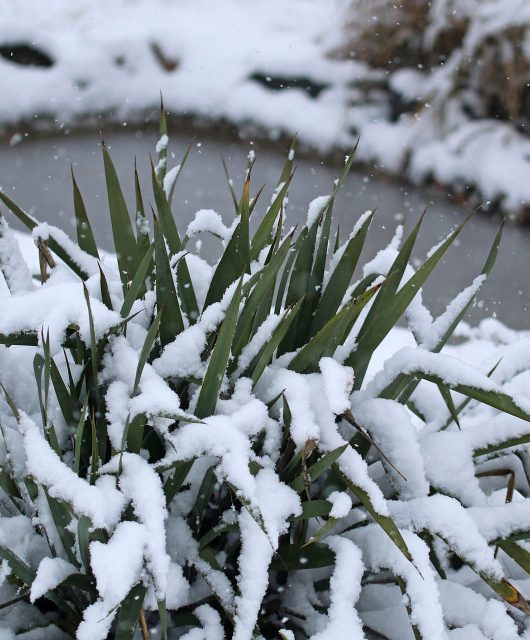Three Ways to Help the Jays
If you live in an area inhabited by Blue Jays, chances are, you are already very aware of it. This striking bird’s large range spans from southern Canada south to Texas and Florida; it breeds east of central Alberta all the way to Newfoundland and Nova Scotia. Its habitat is varied. You can observe it in several types of forest and in suburbs. Its most recognizable trait is likely its loud call. While the Blue Jay is a songbird, its song is not its strong suit, and its shrieks can be heard from afar. It is also known for being aggressive towards other species of birds and animals, chasing them away from food sources by dive bombing.
Home Base
Blue Jays are often welcome in our yards. Blue is a rare colour in nature, and these jays aren’t actually blue. It’s the way the light reflects off their brown feathers that makes these distinctive and highly visible birds (especially during the winter since they don’t tend to migrate very far) appear to be this flashy colour. Their antics and intelligence make them fascinating to watch. They are members of the Corvid family like the very smart crows and ravens. Blue Jays make things entertaining!
Cheering Them On
The Blue Jay is not a species at risk in Canada; in fact, its adaptability makes its population thrive almost anywhere in its range which extends as far south as Texas. But things are changing. Climate change is modifying species ranges so much so that in the far south of the Blue Jay range it is now known to hybridize with another species, the Green Jay which has shifted northward into Texas. The Blue Jay also faces various threats in its natural habitats, including competition for food, predation and habitat loss. So, how can we help? Here are three ways to help the jays.
- Plant Native
The best thing you can do in your own backyard is plant trees and plants which can provide shelter and food all year round. This can be very easy since the Blue Jay is not picky: it’s an omnivore. That being said, three-quarters of its diet consists of plant material, while a small portion comes from meat (they rarely attack nests for eggs and nestlings but will eat a wide variety of insects.). So plants can be helpful for feeding them and attracting insects. Plant wild fruits trees (like Canada Plum and serviceberry), oaks, hazelnuts and beech to feed Blue Jays comfortably. You can also plant deciduous trees with a strong trunk to provide shelter and space to build nests on. Oaks, maples, beeches and elms are good options. But before you go wild adding plants to your gardens and yards, have a look at what plants are native to your area. Not only will these grow better in your local conditions, but they will also provide a more natural setting for wildlife in your yard. - Follow Best Practices If Feeding
If you can’t go all out and plant large trees and varied plants, setting up a bird feeder is a good idea if you are able to. While raising ethical issues about advantages and disadvantages of being fed by humans, it is considered beneficial overall, especially if you keep your feeder clean and protected from possible predators (more on that later). It provides good quality supplemental food, rich in calories and nutrients, especially during the winter when resources are scarce. But what can we feed Blue Jays? Nuts, like peanuts, and seeds, like sunflower and nyjer seeds, tend to be favourites. These can even drive more birds to your yard so that you can better observe them. - Provide Protection
While the proximity with humans hasn’t been much of a problem for Blue Jays, it still can be problematic. Collisions with windows are frequent with all bird species, even smart and adaptable ones. You can prevent those by keeping your bird feeders away from windows and sticking window films, ideally a grid pattern of tightly spaced dots like Feather Friendly window markers. Ensure that these are not transparent to the outside so they can be clearly seen by birds (many products are one-way transparent, allowing you to still see out your window)! All sorts of such products are readily available in stores, or you can make them yourself!
Another threat we can help with is cat predation. Keeping cats in your home is a good solution to all species of birds that may become prey. Given the feisty nature of Blue Jays, it is also likely to attack pets to protect its territory. Research shows that it may even be healthier for your cat to keep them inside.
Cover Your Bases
The Blue Jay can often hold its own and adapt to survive with all sorts of food, habitat and threats, without us. But help is always nice, especially since threats might become more and more important with urbanization, pollution and other issues. Also, new threats might be appearing in the future because of human activity such as climate change. It is always best to lend a hand to keep our biodiversity as intact as possible including this charismatic bird. And helping one species often leads to other species being helped. By helping the Blue Jay, you’re also helping a wide variety of species of birds and small mammals that may live in your area.


